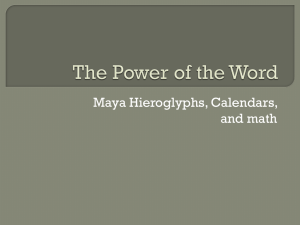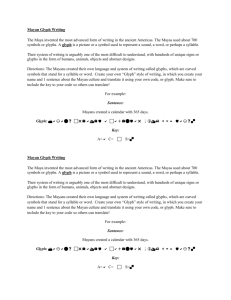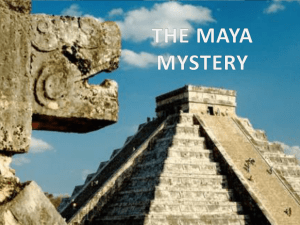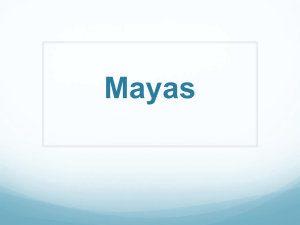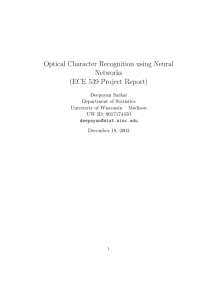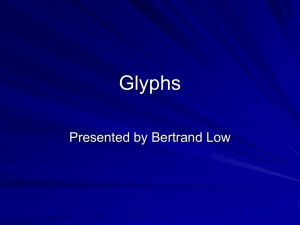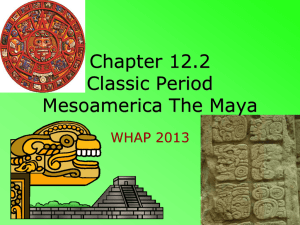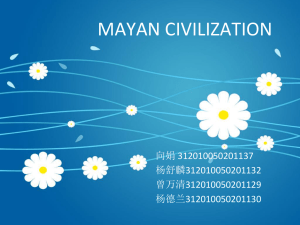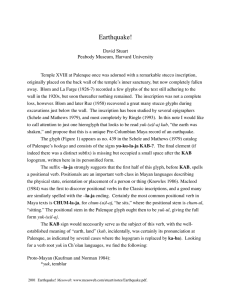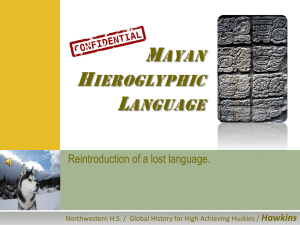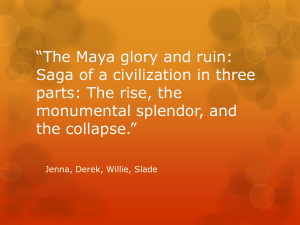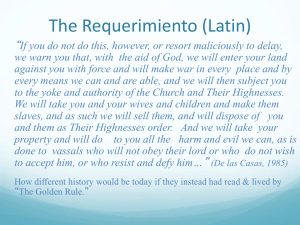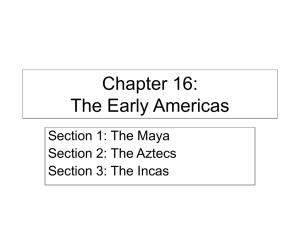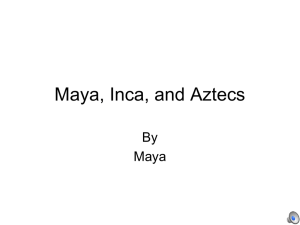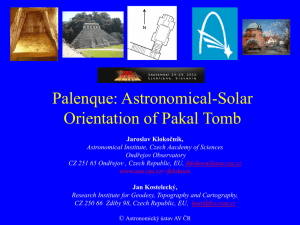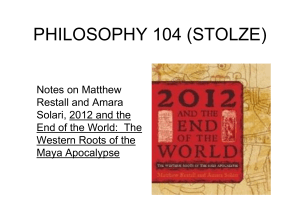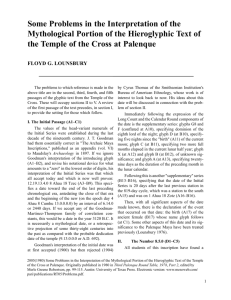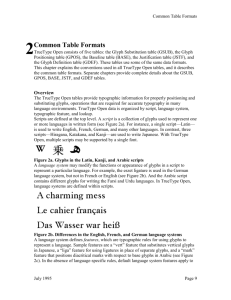Maya Glyph Exercise
advertisement
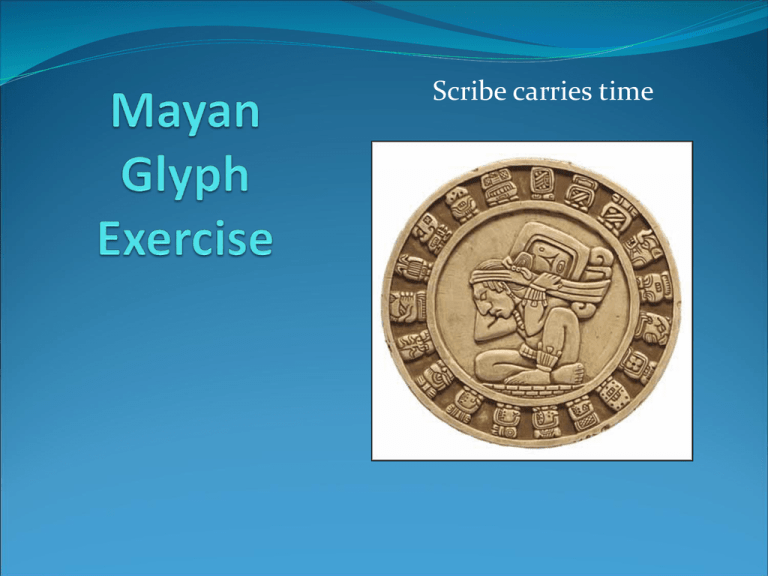
Scribe carries time Oldest Known Writing In the Americas Carbajal Block Stone Carbajal stone is precursor to Maya Glyphs Phonetic or sound based syllables. All syllables combine consonant+vowel. Over 800 known syllable glyphs so far. These 800 form a syllabary utilized by epigraphers or those who study hieroglyphs. Differs from alphabetic and picture writing (called logograms). Alphabets use letters that make up sounds that make up syllables that make up words… Logograms and ideographs often use a one image=one word or idea format. Hieroglyphs like the Mayan glyphs follow few such rules. The Basics of Writing in Mayan Glyphs Most samples are from stone monuments or stelae, architecture in the form of murals, sculpture and reliefs, on ceramic vessels, and more rarely in Maya codices or bark books. Most Maya writing is from the Classic Period cities and temple complexes (100-800 CE) Maya speakers today cannot read the glyphs after a millennium of tumultuous change Maya Classic CityState ruins of Tikal Dozens of sites like Tikal exist in the northern and central lowlands and the southern highlands of central America. It was at this central area that the socalled “collapse” of the Maya took place by 950 CE or about 1000 years ago. Mesoamerica The Maya existed within the larger civilization sphere we refer to as “Mesoamerica.” They emerged as a cultural group at least 3000 years ago and left the most extensive written record of any group in the PreColumbian Americas. The Mayan Core The Mayan civilization consisted of three phases before the Spanish Conquest and Columbian Exchange of 500 years ago- THE PRECLASSIC (?-100 BCE) THE CLASSIC (100-800 CE) THE POSTCLASSIC (10001500 CE) Most Maya glyphs are known from the classic city-states like Tikal or Palenque in the lowlands between modern Mexico and Guatemala. Examples of Mayan Writing Polychrome Vases Incised Vases Stela or carved stone monuments These sculptured stones often depict rulers and describe traditional state politics and history. Codices or Bark Books This is a page from the rarest of all Maya writing forms often referred to as a Codex or bark book. They were actually more like playscripts that lined the upper walls of temples and were read and performed by Maya priests and priestesses before elites, commoners and slaves of a city-state. Example of Maya name glyphs At Palenque the tomb of Lord Pacal ruler of late Classic Palenque was discovered inside the largest pyramid. This breakthrough allowed Archaeologists to link an actual ruler with the ruler and lineage name glyphs found all over the city. Tomb of Pacal Here is the tomb and the body of Lord Pacal with Jade mask. Note the glyphs on top of the sarcophagus lid. Ancient Scripts can be complex! Color drawing of the many elements on Pacal’s sarcophugus or tomb lid. What in the world is going on???? Let’s start easy- with the PACAL Name Glyph Lord Pacal’s name glyph in full. It can be written and seen at Palenque in a number of forms. Epigraphy or Reading the glyph Pacal glyph. A single glyph to represent the word “SHIELD” or Pacal in Classic Maya linguistics. Phonetic syllabary to “write” Pacal Right of the glyph for the word “PACAL” or Shield are the three syllables used to ‘spell’ the same name. PA is the first syllable at the top right corner. Can you find it on your handout? Look for P and A sound box. Epigraphy Moving down from PA we have the syllable glyph for KA in the middle right hand of the image. Can you find KA on your syllabary chart? Look at K and A conjunction. Epigraphy concluded Finally, can you find the AL or LA syllable glyph on this image and in your syllabary chart? Its stylized but readable! Your Turn! Now see if you can write Lets try to your name in Maya glyphs write our using the chart supplied. names in Then exchange it with a Mayan classmate you do not syllabic glyph know and see if you can form. decipher the name of your Hint: Good Q for extra credit on classmate??? MidTerm!!!
